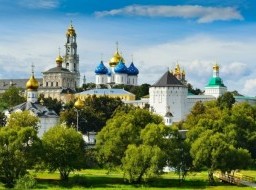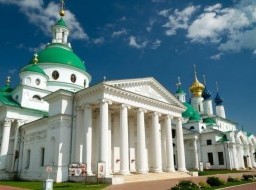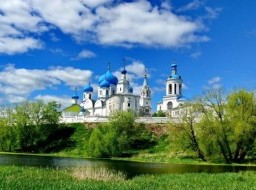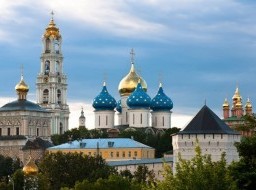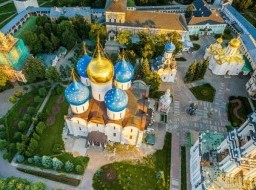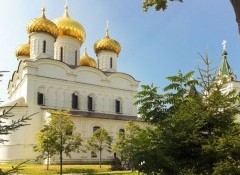Smolensk
The Principality of Smolensk was founded in 1054. Due to its central position amid Russian lands, the city developed rapidly. By the end of the 12th century the princedom was one of the strongest in Eastern Europe, so much so that the Smolensk Dynasty frequently controlled the Kievan throne. Numerous churches were built in the city during its time of power, including the grand church of St. Peter and Paul. Smolensk is one of the oldest Russian cities. There are several versions of Smolensk name origin. The first one is that it comes from old Slavic name for black soil. Black soil could color the waters near ancient settlement called Smolnya. Another version is about Russian word “smola” meaning tar. There were a lot of pine trees in Smolensk area, so the settlement was an important center of resin processing and trade. Smolensk was first mentioned in 863, when it was already a key stronghold controlling the portages between the Dnieper and the Western Dvina rivers and the route between the Moscow region and Western Europe. Smolensk was the capital of Slavic tribe Krivichi. The town also lay on the direct (waterborne) trade route between the Baltic Sea to the north and Kiev and the Byzantine Empire to the south. Smolensk’s position gave it both trading importance and a remarkably stormy history. In 1054, Smolensk Principality was founded. Smolensk developed quickly because it was located in the central part of Russian lands. Smolensk Principality became one of the strongest in Eastern Europe in the beginning of the 13th century. From 1127 to 1243, Smolensk served as the capital of the Great Princedom of Smolensk, one of the strongest Russian princedoms. At the turn of the 13th century, it boasted more stone churches than any other Russian city, and two built in the 12th century remain in good condition today — the Church of Archangel Mikhail and the Church of Saints Peter and Paul. Later, Smolensk lands and town became the key in struggling between Lithuania and Moscow states. In 1597, Russian Tsar Boris Godunov decided to build heavy fortifications to defend the town from Lithuania attacks. Huge red stone kremlin (the largest in Russia) was finished in 1602. But, in 1611 Smolensk was captured by Polish-Lithuanian Commonwealth. Later, in 1654, Russia returned the town after another siege. Napoleon armies had battle with Russian armies near Smolensk in August 1812. Famous Russian writer Leo Tolstoy described that moment in his book “War and Peace”. Napoleon won the battle and captured the city. Again Smolensk was the center of war when Germany forces attacked the USSR in 1941 (Battle of Smolensk). Several historic churches survive and have now been restored, including the 12th-century Churches of Saints Peter and Paul and the Cathedral of the Assumption (17th–18th centuries). Parts of the old city walls also survive. Despite its history of war, Smolensk is better known today for an activity that goes back to its roots. The city is often referred to as the capital of Russian diamonds, and Kristall, a major producer of diamonds in Europe and the biggest in Russia, is based here. Uspensky Cathedral is the main jewel of local residents. Constructed between 1677 and 1772 to honor the city's resistance against the Polish army, this gigantic, magnificent church survived the 1812 war and World War II untouched. It stands 70 meters tall from the foundation to the cross on top. After climbing the high stairs to its front doors, don't forget to turn around for a striking view of part of the city. The church's interior occupies 2,000 square meters, and its gilded iconostasis stretches 31 meters high. The main sacred relics of the church are a 16th-century shroud of Christ and two icons credited with miraculous powers — Lady of Smolensk and Serafim Sarovsky and a wooden cross supposedly made by prominent 19th-century artist Viktor Vasnetsov. Visit the Museum of Russian Vodka, where you can see moonshine still from the early 20th century, Soviet vodka bottles, original posters depicting the Soviet anti-alcohol campaign and several other exhibits. |

